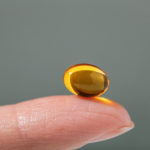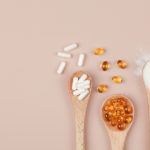By David Blyweiss, M.D., Advanced Natural Wellness
Most Americans don’t think about nutrient deficiencies. After all, we live in the land of plenty. But a recent report came to my attention that clearly shows that we are mistaken – and it’s taking a toll on our health.
According to the National Health and Nutrition Examination Survey, 75 percent of Americans suffer from a vitamin D deficiency. The news is even worse if you are African American or Latino—more than 90 percent aren’t getting enough of the sunshine vitamin.
Today’s lifestyles make it easy to miss out on vitamin D. Anyone who routinely uses sunscreen or avoids direct exposure to sunlight probably has insufficient levels. This puts a large number of Americans at risk of osteoporosis, high blood pressure and heart disease. The problem is, it’s hard to tell if you are deficient. Aside from rickets—an uncommon condition that results from an extreme shortage of vitamin D—there aren’t any telltale signs that you aren’t getting enough. However, here are some clues that you need to have your levels tested:
- Tenderness when you gently press on your shin bone.
- General aches and pains for no apparent reason.
- Muscle weakness.
- Painful bones or joints.
- A depressed mood.
- Osteopenia or osteoporosis.
- Low thyroid function.
- Psoriasis.
- Susceptibility to upper respiratory infections.
- Being overweight.
If you suffer from any of these symptoms—or if you don’t get much sun—ask your doctor to test for 25-hydroxyvitamin D, a form of the vitamin found in the blood. For optimum health, the literature recommends that levels should be between 40 and 100 ng/mL (nanograms per milliliter). For a more realistic target, I tell my patients to shoot for between 50 and 65 ng/mL
Why is vitamin D so very important? Because it impacts the health of your entire body. It influences more than 2,000 genes and plays a key role in regulating the growth and division of cells. A growing number of studies show that adequate vitamin D levels also help to prevent 17 types of cancer, osteoporosis, heart disease, stroke, arthritis, depression, chronic pain, cognition, allergies and asthma, diabetes, inflammatory bowel disease, colds and flu, and the overall risk of death.
Making sure you are getting enough D can also help you control your weight by improving insulin sensitivity. Better insulin sensitivity means cells more readily take in blood sugar and burn it for energy instead of storing it as fat. Improved insulin sensitivity also reduces the risk for heart disease and diabetes.
So how much vitamin D do you need? While the recommended dietary allowance (RDA) for vitamin D is a mere 200 IU per day for adults, there is evidence that people will benefit from up to 2,000 IU daily—and up to 5,000 IU daily if they have tested as deficient. If you are dark-skinned or overweight, you may need even more. One hour in the sun will give you 10,000 -15,000 IU daily, so 200 IU as RDA seems a bit low.
The World's Quickest Solution for Ending Prostate and Urinary Misery
This has recently been revealed to be one of the only real breakthroughs in prostate health.
The seeds of a strange fruit (sometimes called "Chinese Apples") hold powerful phytonutrients that are a revolution in prostate health.
In fact, UCLA and Veterans Administration research have now proved this to be true.
Not only that, but it may be the worlds quickest solution for ending prostate misery.
Simply stated, these phytonutrients represent a huge step beyond beta sitosterol, saw palmetto, and other phytosterols alone.
Simply click HERE if you want to have fast prostate relief...restful, uninterrupted sleep...no more constant "urges to go"...enhanced virility...and optimal prostate support for life.
When shopping for a vitamin D supplement, look for D3 (also called cholecalciferol). This is the naturally occurring form of the nutrient. Vitamin D2 (also called ergocalciferol) is usually a metabolic product that is not as beneficial and high amounts may even be toxic.
To raise vitamin D without supplements, you would need to increase your unprotected sun exposure for 10 to 15 minutes a day. Eating more fish can also help. A 3.5-ounce serving of wild fresh salmon has 600 to 1,000 I.U.’s of vitamin D, but it would take a quart of milk a day to get the recommended dose of vitamin D. While these measures can help ensure a vitamin D boost, for consistently high levels I recommend taking 1,000 to 2,000 IU of supplemental D every day.
References:
Adams JS. Update in vitamin D. Journal of Clinical Endocrinology and Metabolism. 2010;95:471-478.
Autier P. Vitamin D supplementation and total mortality: a meta-analysis of randomized controlled trials. Archives of Internal Medicine. 2007;167:1730-1737.
Grant WB. Estimated benefit of increased vitamin D status in reducing the economic burden of disease in western Europe. Progress in Biophysics and Molecular Biology. 2009;99:104-113






